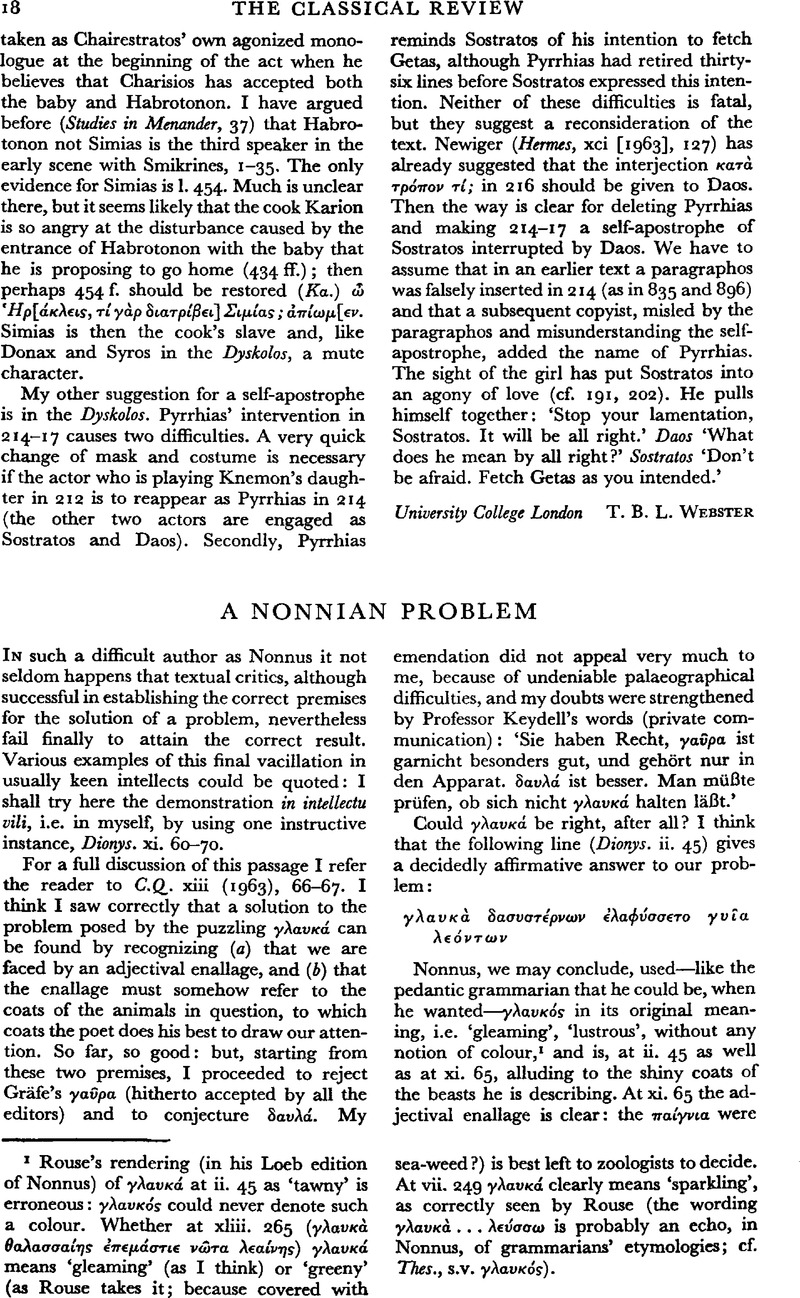Published online by Cambridge University Press: 27 February 2009

1 Rouse's rendering (in his Loeb edition of Nonnus) of γλαυκά at ii. 45 as ‘tawny’ is erroneous: γλαυκός could never denote such a colour. Whether at xliii. 265 (γλαυκὰ θαλασσαίης ἐπεμάστιε νῶτα λεαίνης) γλαυκά means ‘gleaming’ (as I think) or ‘greeny’ (as Rouse takes it; because covered with sea-weed?) is best left to zoologists to decide. At vii. 249 γλαυκά clearly means ‘sparkling’, as correctly seen by Rouse (the wording γλαυκὰ … λεύσσω is probably an echo, in Nonnus, of grammarians' etymologies; cf. Thes., s.v. γλαυκός).